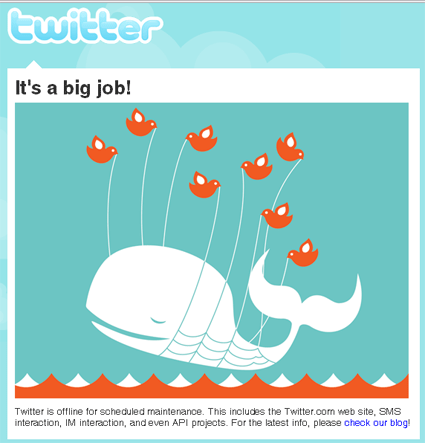Social Media The New Search Engine?
In Social Media, Studies & Stats | No commentIt seems that social media sites have become a search engine of sorts. A recent report released by the Nielsen Group has search engines such as Google, wondering if their days maybe coming to an end. However search engines are still the favorite option when it comes to searching at 37 percent, but social media sites are climbing up the chart.
Jon Gibs, VP Media Analytics for Nielsen, said, “roughly 18 percent of users see [social media] as core to finding new information. While still a smaller percentage than those who use search engines or portals like Yahoo! or MSN, it is a significant figure. And as social media usage continues to increase, I can only expect this figure to grow.” (more…)


 Mark Zuckerberg, the CEO and Founder of Facebook,
Mark Zuckerberg, the CEO and Founder of Facebook,  Although some of the initial swine flu hysteria has seemed to subside, search trends indicate that it’s still very much in the public consciousness. After hearing multiple stories and stats from both the local and national news, people fired up their computers and turned to the search engines.
Although some of the initial swine flu hysteria has seemed to subside, search trends indicate that it’s still very much in the public consciousness. After hearing multiple stories and stats from both the local and national news, people fired up their computers and turned to the search engines. While a staggering amount of people seem to talk about Twitter, the latest polls and research indicate that talk is about all that Twitter can muster nowadays. According to these latest numbers, the hype surrounding the microblogging site is far exceeding the practical rate of usage.
While a staggering amount of people seem to talk about Twitter, the latest polls and research indicate that talk is about all that Twitter can muster nowadays. According to these latest numbers, the hype surrounding the microblogging site is far exceeding the practical rate of usage. I’ve always held the belief that XML sitemaps are an important technical aspect to an effective marketing campaign, especially when it comes to blog and search engine marketing. However, this belief was only supported in theory. Sure, every piece of marketing advice and documentation pointed to why XML sitemaps were beneficial, but there wasn’t any data to back up that claim. It was a search engine optimization assumption, in that because this technology was supported by Google and all the other major engines, it made sense to include it in a comprehensive marketing campaign. The question is, does this actually help the engines index your site better or faster? Or is this just a myth pushed by myself and the rest of the SEO community to justify the addition? Couldn’t search engines find and index your site or blog easily on their own?
I’ve always held the belief that XML sitemaps are an important technical aspect to an effective marketing campaign, especially when it comes to blog and search engine marketing. However, this belief was only supported in theory. Sure, every piece of marketing advice and documentation pointed to why XML sitemaps were beneficial, but there wasn’t any data to back up that claim. It was a search engine optimization assumption, in that because this technology was supported by Google and all the other major engines, it made sense to include it in a comprehensive marketing campaign. The question is, does this actually help the engines index your site better or faster? Or is this just a myth pushed by myself and the rest of the SEO community to justify the addition? Couldn’t search engines find and index your site or blog easily on their own? It’s no surprise that humans react in odd and irrational ways, particularly when it comes to spending money. To that end, Dan Ariely, author of
It’s no surprise that humans react in odd and irrational ways, particularly when it comes to spending money. To that end, Dan Ariely, author of  Family mementos are an important part of passing memories and traditions from one generation to the next. For most, these cherished items include jewelry or photos – but for Long Island, New York resident D. Boyd, they’re pots and pans.
Family mementos are an important part of passing memories and traditions from one generation to the next. For most, these cherished items include jewelry or photos – but for Long Island, New York resident D. Boyd, they’re pots and pans. In the United States we have a tendency to think we are the most technologically, politically, and socially advanced. But, as far as internet use goes, Americans aren’t logging on as often as Chinese users. With 253 million internet users, China recently surpassed the United States with the
In the United States we have a tendency to think we are the most technologically, politically, and socially advanced. But, as far as internet use goes, Americans aren’t logging on as often as Chinese users. With 253 million internet users, China recently surpassed the United States with the 
 In a time when countless retail giants are cutting costs, laying off and closing their doors, many small business owners are left wondering whether they’ll be next. It’s easy to see that the economic down turn has forced consumers to rethink their spending habits. Though the media tends to focus more on large corporations, small businesses across the country are getting hit just as hard.
In a time when countless retail giants are cutting costs, laying off and closing their doors, many small business owners are left wondering whether they’ll be next. It’s easy to see that the economic down turn has forced consumers to rethink their spending habits. Though the media tends to focus more on large corporations, small businesses across the country are getting hit just as hard.